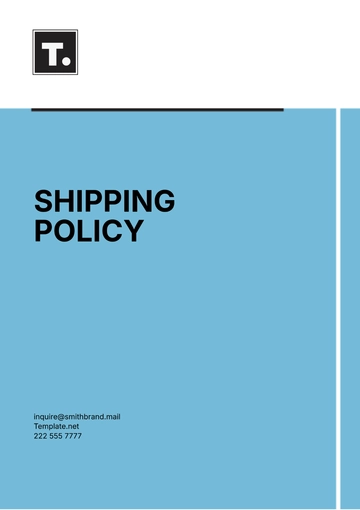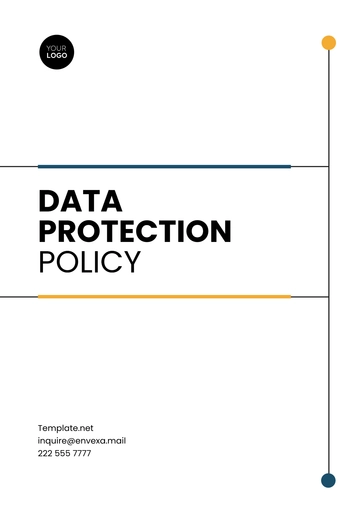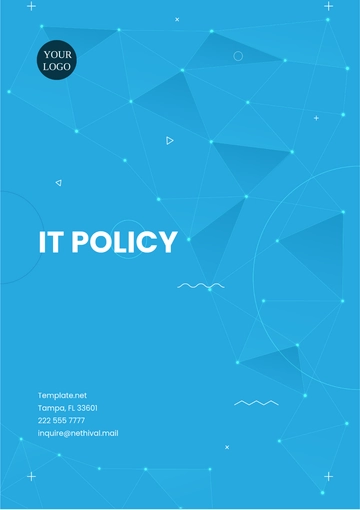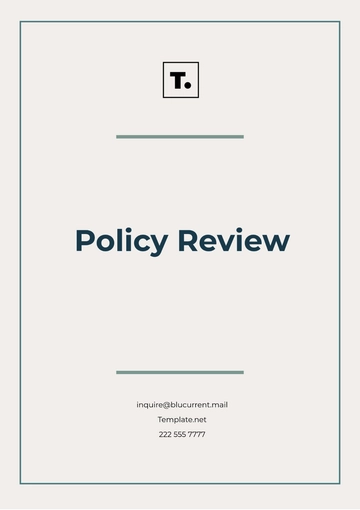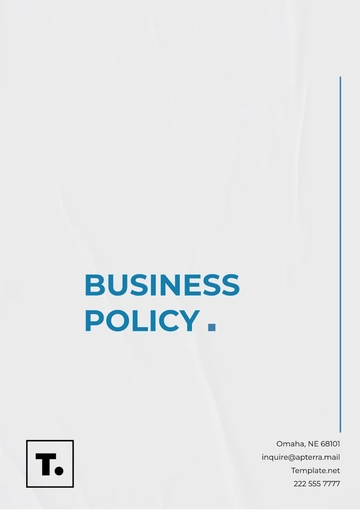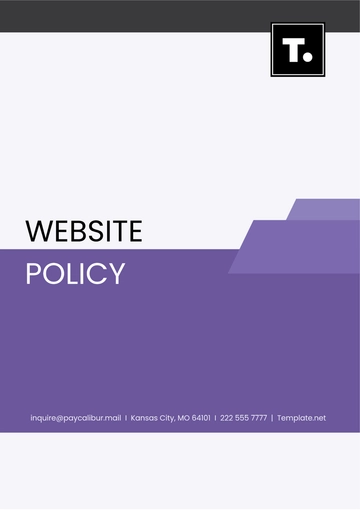Free Sales Policy & Procedure for Annual Forecasting
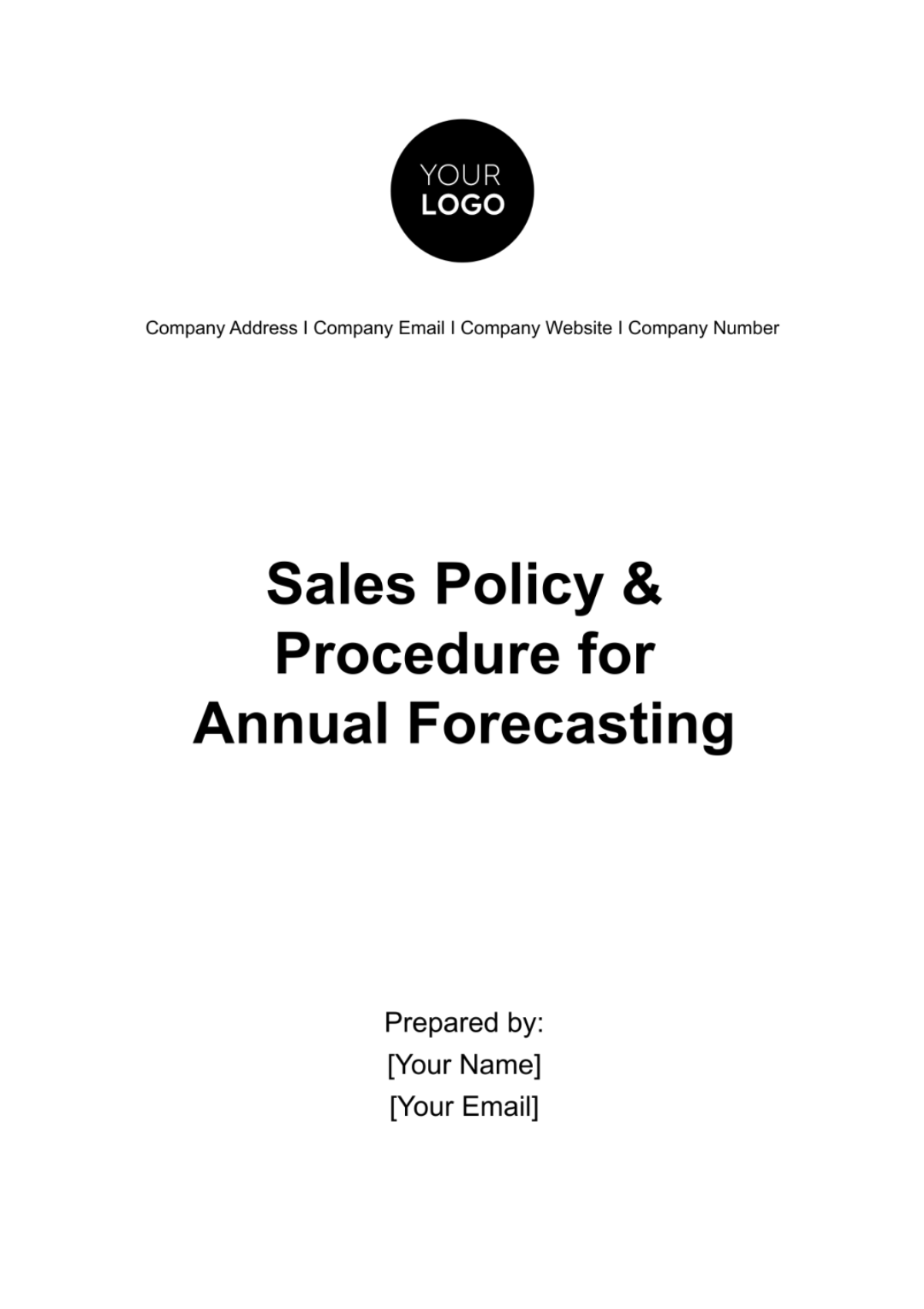
Introduction and Scope
The purpose of this Sales Policy & Procedure for Annual Forecasting is to ensure accurate and effective sales forecasting for [Your Company Name], contributing to the company's sustainable growth and success. Accurate forecasting is crucial for aligning resources, setting achievable sales targets, and making informed business decisions.
This policy applies to all sales teams and personnel within [Your Company Name]., encompassing our offices in [Location] and regional sales teams across the country. It guides the annual forecasting process, ensuring consistency and reliability across all branches.
Annual Forecasting Process
To prepare for annual forecasting, a cross-functional team consisting of Sales, Marketing, and Finance departments will convene a planning meeting in September each year. The team will set out the forecasting timeline, responsibilities, and key milestones.
Gathering Historical Data
Historical sales data for the past three years must be gathered for analysis. The data will serve as a valuable foundation for our forecasting process.
Sales Forecasting Methods
We employ quantitative forecasting methods like time series analysis, moving averages, and exponential smoothing to make data-driven predictions. Additionally, qualitative methods, incorporating expert judgment and customer feedback, further enhance our forecasting accuracy.
Sales Forecasting Tools
Our forecasting tools include a robust CRM system that integrates customer data, market research reports, and historical sales data in a user-friendly interface.
Forecasting Guidelines
Data Sources and Quality
Utilize reliable and up-to-date data sources for sales history, market research, and customer insights. Ensure data accuracy and consistency across all sources used in the forecasting process.
Documentation and Reporting
Maintain comprehensive documentation of the forecasting process, methodologies used, and assumptions made. Prepare clear and concise reports for management review, highlighting key findings, trends, and recommendations.
Risk Assessment and Scenario Planning:
Identify potential risks that could impact sales, such as market fluctuations, competitive actions, or changes in customer preferences. Develop alternative scenarios to prepare for various market conditions.
Accuracy and Revision
Regularly compare the forecasted figures with actual sales to assess the accuracy of the forecast. Revise the forecast as necessary based on actual performance and changing market conditions.
Forecasting Procedures
Data Collection
Data collection for forecasting involves gathering data from various sources, including sales reports, customer surveys, and market research. Each regional sales team is responsible for collecting and submitting their sales data by the 5th day of each month.
Data Analysis
Our data analysis process includes the identification of sales trends, seasonality, and customer preferences. For example, we've observed a seasonal spike in eco-friendly cleaning product sales in the spring, indicating the need to stock up inventory accordingly.
Forecasting Model Selection
Our forecasting model selection process involves cross-functional collaboration. A team comprising Sales, Marketing, and Finance experts will review and select the most suitable forecasting model based on historical data, market trends, and expert judgment.
Creating the Annual Sales Forecast
The forecasted sales must be based on our chosen forecasting model. This forecast is a result of the collective effort of our teams and incorporates the growth trends and customer insights gathered in the previous steps.
Review and Approval
Forecast Review Committee
The Forecast Review Committee plays a pivotal role in ensuring the accuracy of the forecast. The committee consists of a Sales Director, Marketing Manager, and Finance Manager. Their diverse expertise ensures a well-rounded evaluation of the forecast.
Finalizing the Forecast
The forecast will be reviewed and refined by the Forecast Review Committee in December. The goal is to ensure it aligns with our sales objectives, market conditions, and customer preferences.
Approval Process
Once approved by the Forecast Review Committee, the final forecast will be presented to the executive team in January for final approval. The executive team will ensure that the forecast is in line with the company's overall strategy.
Communication and Implementation
Distribution of Forecast
The approved forecast will be communicated to all sales and marketing teams in a company-wide meeting scheduled for [January 20th]. This meeting will also outline the strategies to achieve the forecasted targets.
Implementation in Sales and Marketing
Sales and marketing teams will align their strategies with the forecasted sales goals. For example, marketing campaigns for our best-selling products will be intensified in spring, capitalizing on the seasonal spike in demand.
Monitoring and Adjusting
Regular Performance Monitoring
Monthly performance reports will be generated to track progress against the forecasted targets. The results of the sales must reach 10% above the forecasted figure.
Mid-year Review
A mid-year review will assess the need for adjustments based on market changes and performance. For instance, if a new competitor enters the market, we'll analyze its impact on our sales figures and adjust strategies accordingly.
Quarterly Adjustments
If necessary, adjustments will be made on a quarterly basis to ensure alignment with changing market conditions. For example, we may adjust the inventory levels of our best-selling products to meet increased demand in specific quarters.
Documentation and Reporting
Record-keeping
Maintaining organized records is essential for the integrity and transparency of our forecasting process. All data and documents associated with the forecasting process will be securely stored and organized in a designated digital repository. This repository will be maintained with strict adherence to data retention policies and access controls.
Data Classification
Data will be classified into categories, such as historical sales data, customer surveys, market research reports, and forecasting models. Each category will have its own unique storage and access requirements to ensure that sensitive information is appropriately safeguarded.
Data Retention
Data will be retained in accordance with legal and regulatory requirements, as well as best practices. Different types of data may have varying retention periods. For example, historical sales data may be retained for a minimum of five years to support audits and historical analysis.
Reporting Requirements
Regular reporting is an integral aspect of our forecasting process, providing insights into our performance and serving as an early warning system for potential issues or opportunities. To ensure robust reporting, the following requirements will be met:
Key Performance Indicators
Reports will track key performance indicators (KPIs) such as revenue, product-wise sales, and regional performance. These KPIs will be used to gauge our performance against the forecasted figures and to inform decision-making.
Data Security
Data security is a top priority to protect sensitive information from unauthorized access or breaches. Our data security measures encompass the following aspects:
Aspect | Description |
|---|---|
Password Protection | Access to data and systems will be controlled through strong password policies, ensuring that only authorized personnel have access. Passwords will be regularly updated, and multi-factor authentication will be implemented for enhanced security. |
Restricted Access | Access to sensitive data will be strictly controlled, with individuals granted access only to data that is essential for their roles. Authorization and access rights will be granted based on the principle of least privilege. |
Encryption | Sensitive information, such as customer data and financial records, will be encrypted both in transit and at rest to protect it from interception or unauthorized viewing. Secure encryption protocols will be employed in all communication and storage of sensitive data. |
Data Backups | Regular data backups will be performed to safeguard against data loss due to unexpected events. These backups will be securely stored and easily recoverable in case of data corruption or loss. |
Roles and Responsibilities
Sales Director
The Sales Director is responsible for overseeing the entire forecasting process, from data collection to final approval. They will also lead the monthly performance review meetings.
Sales Managers
Sales Managers are responsible for providing accurate sales data, coordinating with the sales team, and aligning strategies with the forecasted goals. Each manager will oversee regional sales teams, ensuring data accuracy and performance alignment.
Sales Representatives
Sales Representatives play a vital role in providing feedback, customer insights, and data that contribute to the forecasting process. They will participate in monthly data collection and share insights from customer interactions.
Forecast Review Committee
The Forecast Review Committee ensures the accuracy and reliability of the forecast. They will meet monthly to review performance and make any necessary adjustments.
Data Privacy and Document Confidentiality
Data Privacy
Protecting the privacy of sensitive data is of utmost importance at [Your Company Name]. Any data collected, shared, or stored as part of the forecasting process must adhere to relevant data protection regulations. This includes customer information, financial data, and sales performance records. Access to this data is restricted to authorized personnel only, and strict security measures are in place to prevent data breaches.
Document Confidentiality
All documents related to the forecasting process, including reports, forecasts, and supporting documents, are considered confidential. They should not be shared with unauthorized individuals or entities. Confidential documents must be securely stored in electronic or physical format, and access is restricted to personnel with a legitimate need to view them. Any breach of document confidentiality may result in disciplinary action in accordance with our company's policies.
Conclusion
The Sales Policy & Procedure for Annual Forecasting is a guide that ensures the accuracy and effectiveness of our annual sales forecasting process at [Your Company Name]. The policy covers the entire forecasting process, from data collection and analysis to model selection and final approval, and provides guidelines based on sales goals, market analysis, customer insights, and product analysis.
By adhering to this policy, we are not only ensuring the success of [Your Company Name]., but also advancing our mission to promote our products in the market. This document serves as a foundation for informed decision-making and strategic planning, and we look forward to a successful year ahead.
- 100% Customizable, free editor
- Access 1 Million+ Templates, photo’s & graphics
- Download or share as a template
- Click and replace photos, graphics, text, backgrounds
- Resize, crop, AI write & more
- Access advanced editor
Maximize your sales potential with Template.net's Sales Policy & Procedure for Annual Forecasting Template. Crafted for precision, it's fully editable and customizable to suit your unique business needs. Seamlessly modify it in our AI Editor Tool, ensuring effortless adaptation to changing market dynamics. Elevate your forecasting game today!
You may also like
- HR Policy
- Restaurant Policy
- Company Policy
- Accounting Policies and Procedures
- Website Policy
- Privacy Policy
- Safety Policy
- School Policy
- IT and Software Policy
- Law Firm Policy
- Construction Policy
- Interior Design Policy
- Travel Agency Policy
- Education Academic Policy
- Security Policy
- Real Estate Policy
- Expense Policy
- Software Policy










